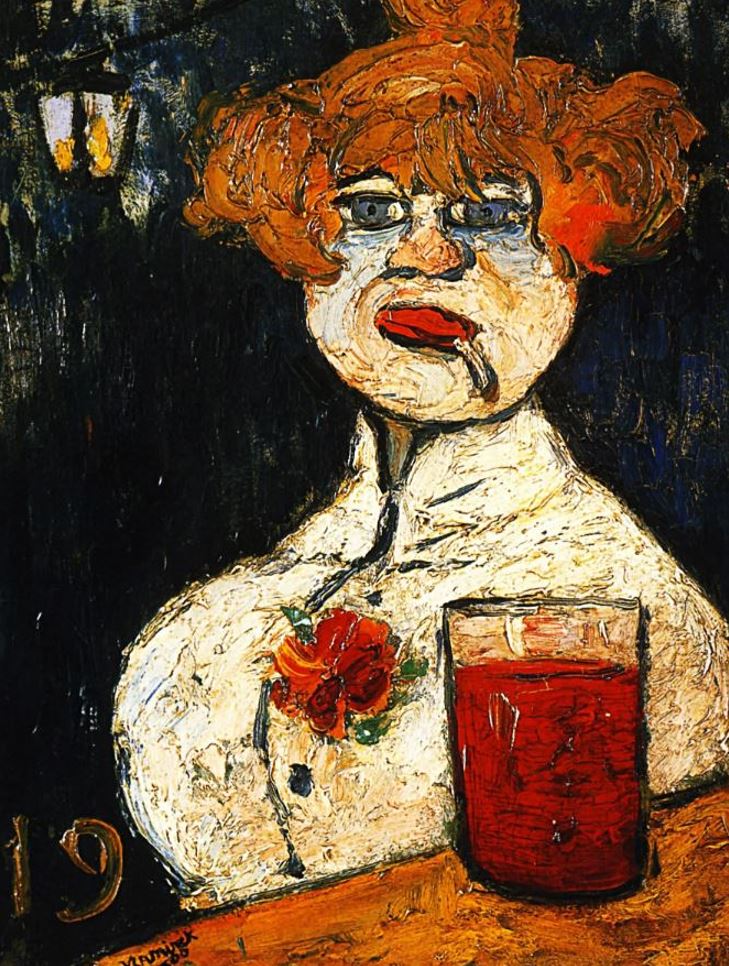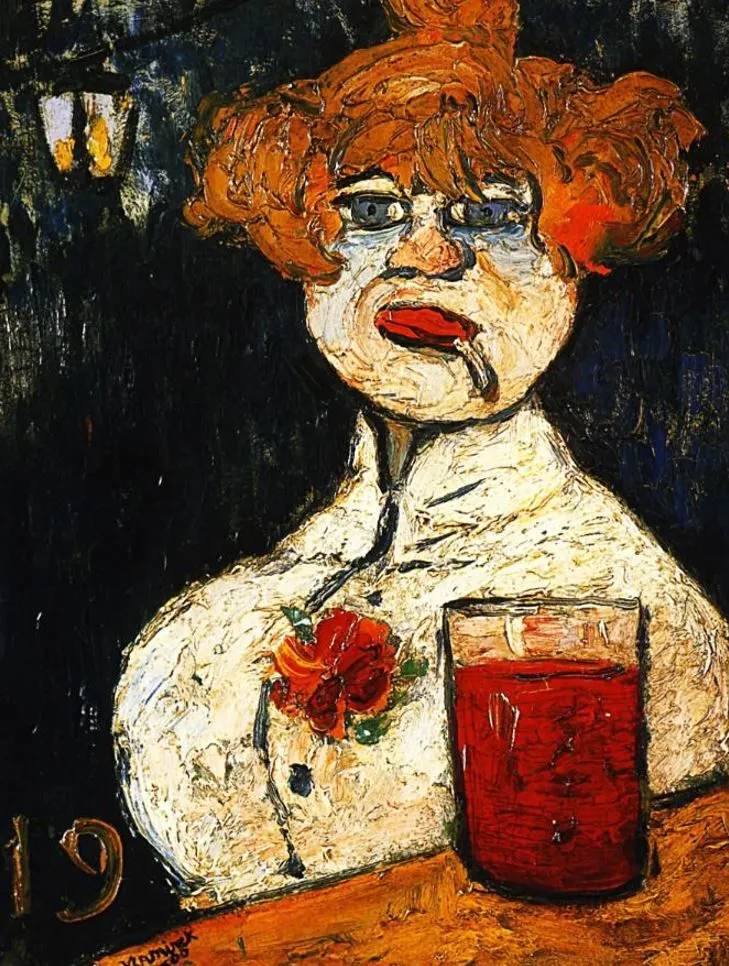Explore the Masters
12th century Art
13th Century Art
14th Century Art
14th century B.C. Art
15th century Art
16th century Art
17th century Art
18th century Art
19th century Art
1st-century BC Art
20th century Art
21st Century Art
2nd century Art
2nd Century BC Art
2nd Century CE Art
3nd Century Art
4th century BC Art
5th century BC Art
6th century B.C. Art
7th centry Art
7th century B.C. Art
9th century B.C. Art
African Art
AI Art
Albanian Art
Algerian Art
American Art
Ancient Art
Argentine Art
Armenian Art
Art Movements and Styles
Art Quotes — Literature
Australian Art
Austrian Art
Awarded Artist
Azerbaijani Art
Baroque Era style
Belgian Art
Blogger
Bohemian Art
Bolivian Art
Bosnian Art
Brazilian Art
British Art
British Museum
Brooklyn Museum
Bulgarian Art
Burmese Art
Cambodian Art
Canadian Art
Catalan Art
Chilean Art
Chinese Art
Christie’s
Cleveland Museum of Art
Colombian Art
Croatian Art
Cuban Artist
Czech Art
Danish Art
Digital art
Dominican Artist
Dutch Art
Ecuadorian Artist
Egyptian Art
Estonian Artist
Fai da te Art Blogger
Filipino Art
Finnish Art
Flemish Art
French Art
Genre painter
Georgian Artist
German Art
Greek Art
Guatemalan Artist
Haitian Artist
Hawaii Art
Hermitage Museum
Hudson River School
Hungarian Art
Impressionist art movement
Indian Art
Iranian Art
Iraqi Art
Irish Art
Israeli Artist
Italian Art
Japanese Art
Jewish Artist
Kazakhstani Artist
Korean Art
Kurdish Art
Latin American Artist
Latvian Artist
Lebanese Artist
Libyan Artist
Lithuanian Artist
Macedonian Art
Macedonian Artist
Maltese Art
Metropolitan Museum of Art
Mexican Art
Moldovan Artist
Moma
Mongolian Artist
Moroccan Artist
Musée d’Orsay
Musée du Louvre
Museo del Prado
Museo Thyssen-Bornemisza
Museum Barberini
Museum Masterpieces
MusicArt
National Gallery London
National Gallery of Art Washington
Netherlandish Art
Netherlandish Artists
New Mexico Artist
New Zealand Art
Nigerian Artist
Norwegian Art
Pakistani Artist
Paris painting
Peruvian Art
Photographer
Polish Art
Politica dei cookie
Portuguese Artist
Post-Impressionism
Realist Artist
Renaissance Art
Rijksmuseum
Romanian Art
Royal Academy
Russian Art
Scottish Art
Sculptor
Senegalese Artist
Serbian Artist
Singaporean Art
Sitemaps
Slovak art
Slovenian Art
Sotheby’s
South African Art
Spanish Art
Swedish Art
Swiss Art
Syrian Artist
Taiwanese Artist
Tate Britain
Thailand Artist
The Samuel Kress Collection
Tibetan Artist
Turkish art
Uffizi Gallery
Ukrainian Art
Uruguayan Artist
Van Gogh Museum
Vatican Museums
Venezuelan Art
Victoria and Albert Museum
Vietnamese Art
Welsh Art
Women Artists
Autumn Landscape
- Date created: 1905
- Dimensions: 46.2 x 55.2 centimeters
- Location: MoMA, New York City, United States
Autumn Landscape is another early work by de Vlaminck which was created at the height of the Fauvism art movement. It remarkably doesn’t feature the bright and vivid colors that were inspired by the paintings of Vincent van Gogh (1853-1890).
This work does hint at the interest of Vlaminck in the style of Paul Cézanne, a man who aimed to paint elements as simple as possible. This landscape features the same short brushstrokes that reduce elements to their basic geometric forms. This is very clear with the trees in this painting.

 Autumn Landscape / Wiki Commons
Autumn Landscape / Wiki Commons
Tugboat on the Seine, Chatou
- Date created: 1906
- Dimensions: 50.2 x 65.1 centimeters (19.75 x 25.62 inches)
- Location: National Gallery of Art, Washington D.C., United States
Tugboat on the Seine, Chatou is another painting that was completed around the same time. This was a year after the Fauvism artist had their first controversial exhibition, the 1905 Salon d’Automne, which also featured works by Vlaminck.
Most of his paintings completed in 1905 and 1906 were inspired by the amazing works of art of Vincent van Gogh, the Dutch artist who transformed artworks into vibrating pictures. It was also inspired by Derain’s paintings produced in Southern France.

 Tugboat on the Seine, Chatou / Wiki Commons
Tugboat on the Seine, Chatou / Wiki Commons
Career
The beginning of Maurice de Vlaminck’s career can be counted from his work as a mechanic, the post which he occupied in 1892 in Chatou. To earn his living and to support his family, he also took part at the cycling races which he won many times as a professional bicycle racer. He never expected himself to become a professional painter, however, it was at that time when the artist created his first paintings.At the age of twenty, Vlaminck started his military service in a regimental band. While in the army, Maurice de Vlaminck used his painting talent to produce a decoration for the regimental celebration in 1899. He also contributed as an author to radical periodicals, among which were Fin de siècle and L’anarchie.Vlaminck completed his military service in 1900 and began to give the violin lessons to support himself financially. The same year, the artist met André Derain who became his friend and encouraged Maurice to pursue the career of the painter. Together, they rented a studio in Chatou and worked there for a year. One of the early Vlaminck’s works of the period was the painting called At the Bar dated to 1901.During this time, Derain introduced Vlaminck to Henri Matisse at the exhibition of Vincent van Gog’s art held at the Bernheim Jeune gallery in Paris. The style of van Gogh impressed Maurice Vlaminck a lot and he started to introduce intense colors in his paintings, like in Barges on the Seine (1906).In 1902, Derain left the studio in Chatou to do his military service. Nevertheless, two friends maintained their collaboration through letters. So, André Derain illustrated several pornographic novels written by Vlaminck between 1902 and 1903.In 1905, Maurice Vlaminck presented his artworks at the Salon des Indépendants where the artist sold just one of his creations. The same year, Vlaminck participated at the Salon d’Automne along with Matisse and Derain. An art critic Louis Vauxcelles dubbed the artists «fauves» (wild beasts), the title which soon gave birth to the new art style, Fauvism.The exhibition played an important role in Vlaminck’s career of the painter. Soon after the show, the artist was introduced by Henri Matiss to the well-known art dealer of the time, Ambroise Vollard, who bought the collection of Vlaminck’s works and proposed him a five-year contract. The following year, Maurice de Vlaminck held his debut solo exhibition. Typical canvases of Vlaminck’s Fauve period were Gardens of Chatou (1904), Picnic in the Country (1905), and Circus (1906).In 1908 Vlaminck’s style changed, and under the influence of Paul Cézanne’s work he aimed at well-constructed compositions colored in darker palette than earlier. This is exemplified in Barges (1908-1910) and The Flood, Ivry (1910). During this period, the artist took part at several international exhibitions.At the outbreak of the First World War, Vlaminck joined the war effort near Paris. At this time, he wrote his first poems. After the conflict, the artist had his second solo exhibition in 1919 in Paris, and his popularity continued to grow. Other significant exhibitions of this inter-war period were his retrospective at the Palais des Beaux-Arts in Paris in 1933 and the Exhibition of the Independent Artist which took place four years later at the Petit Palais in Paris.Due to successful sales of his artworks, Vlaminck moved to the countryside, Rueil-la-Gadelière, and restricted somehow his contacts with the public.During the Second World War, the artist published two articles and a book called ‘Portraits avant décès’ (1943) where he strongly criticized abstract art, in particular Cubism and Picasso. These writings had a bad influence on his popularity and reputation. However, Vlaminck presented his artworks at the Fauvist Exhibition organized in 1947, and at the Venice Biennale in 1956.Maurice de Vlaminck spent the last period of his life in Rueil-la-Gadelière where he produced monochromatic rural landscapes, illustrations to different books and wrote a lot of poems and memoirs.
Useful Resources on Maurice de Vlaminck
Books
websites
articles
video clips
Books
The books and articles below constitute a bibliography of the sources used in the writing of this page. These also suggest some accessible resources for further research, especially ones that can be found and purchased via the internet.
biography
-
In Montmartre: Picasso, Matisse and the Birth of Modernist ArtOur Pick
by Sue Roe
-
Les Fauves: A sourcebook
by Russell T. Clement -
Dangerous Corner
by Maurice de Vlaminck
catalogs
-
Vlaminck, Master of Graphic Art: A Retrospective Exhibition of Graphic Works, 1905-1926
by Maurice de Vlaminck -
The Fauve LandscapeOur Pick
by Judi Freeman and James Herbert
View more books
websites
articles
video clips
Personality
In his youth, Maurice de Vlaminck was a very talkative person and had a reputation of troublemaker and a lover of women.He was independent and stubborn.
Physical Characteristics:
Maurice de Vlaminck was tall and had an athletic figure.
Quotes from others about the person
«Vlaminck is entirely possessed by Vlaminck. It is his strength; dare I say, his virtue.» Emmanuel Bénézit, a French collector, art historian and editor of the Benezit Dictionary of Artists»..co-existent with.. ..a personal poetry and romanticism that is often gloomy and even violent, Vlaminck’s pictures have a formal logic, an underlying strength of organization that derives from more than one classical precedent.» Patrick Heron, a British painter»His simple and intensive technique allows the lines their full liberty, the volumes their full relief, and the colors their full clarity, their full beauty.» Guillaume Apollinaire, a French poet
Биография
Морис де Вламинк родился 4 апреля 1876 года в Париже в семье музыкантов — скрипача, происходившего из Фландрии и пианистки, родившейся в Лотарингии. В 1878 году переехал с родителями в городок Ле-Везине (Иль-де-Франс). Ле-Везине расположен в 15 км к западу от Парижа, в излучине реки Сены. Морис обучался игре на скрипке под руководством отца, музыканта-педагога. Занимался велосипедным спортом.
С 17-летнего возраста Вламинк начинает регулярные занятия живописью в расположенной на острове Шату мастерской местного художника Анри Ригалона (Henri Rigalon)).
Поворотным моментом в биографии Вламинка стало случайное знакомство в пригородном парижском поезде с Андре Дереном. Вскоре, выйдя в отставку с военной службы, Вламинк арендовал совместную с Дереном студию в Шату, рядом с домом Альфонса Фурнеза. В ресторане этого дома 30-ю годами ранее проходили встречи Клода Моне, Альфреда Сислея, Эдгара Дега и Огюста Ренуара.
Дружеские отношения между Вламинком и Дереном длились всю жизнь, правда, с 15-летней паузой, которая закончилась примирением в 1942 году. Морис де Вламинк описал обстоятельства их знакомства в тексте, изданном по случаю открытия выставки в Парижской галерее «Bing» (март 1947):
Морис де Вламинк(справа) иАндре Деренв Шату, через 42 года после первого знакомства. 1942
В 1901 году Вламинк посещает ретроспективную выставку Ван Гога. Увидев на этой выставке произведения рано ушедшего из жизни голландского мастера, Вламинк писал, что его «душа была перевернута от радости и отчаяния» так, что ему хотелось плакать. В 1904 году одна из картин Вламинка попадает в галерею Берты Вейль.
Морис Вламинк считается одним из главных представителей такого направления французской живописи, как фовизм (1904—1908). В октябре 1905 года он участвовал (наряду с Матиссом, Дереном, Мангеном и Альбером Марке) в скандальном «Осеннем салоне», после которого влиятельный консервативный критик Луи Воксель (1870—1943) назвал молодого художника и его друзей «фовистами», фр. les fauves («дикими зверями», «бестиями»).
В 1906 году картины Вламинка покупает парижский маршан Амбруаз Воллар, а в 1907 году в галерее Воллара Вламинк делает свою первую выставку. Во время первой мировой войны Вламинк работал чертёжником на оборонном предприятии. В 1919 году он приобрел дом в Вальмондуа, который в 1925-м обменял на небольшое земельное владение в Руэлль-ла-Гадильере. В 1936 году Институт Карнеги в Нью-Йорке осуществил выставку работ Вламинка в США. После вступления немецких войск во Францию (1940) художник уехал в Нормандию, однако скоро вернулся в свой сельский дом. В 1941 году Вламинк примкнул к Лиге Антифашистов. В 1954-м он представлял свою страну на биеннале в Венеции.
Последние годы жизни Мориса Вламинка определялись его дружбой со швейцарским врачом Зигмундом Поллагом (Sigmund Pollag, 1888—1977), который собрал коллекцию графических работ художника и пожертвовал её в 1970 году в Kunstmuseum Bern (англ.). Вламинк — автор множества книг, в том числе автобиографий.
Личная жизнь
В 1894 году Вламинк женился на Сюзанне Берли (Suzanne Berly; развелись в 1905). Вторым браком женат на Берте Комбе (Berthe Combes); у супругов были две дочери .
Умер художник 11 октября 1958 года в Рюэй-ла-Гадельер (фр.), департамент Эр и Луар.
The Bar Counter
- Date created: 1900
- Dimensions: 40×32 centimeters (15.74 x 12.59 inches)
- Location: Calvet Museum, Avignon, France
The Bar Counter or “At the Bar” was completed around the same time and incorporates the same peculiar style of Maurice de Vlaminck’s early years. It depicts a red-haired woman sitting at a bar with a cigarette in her mouth.


This painting is believed to have been inspired by the paintings of Henri de Toulouse-Lautrec, one of the most renowned Art Nouveau artists in history. The subject matter was probably derived from his paintings of prostitutes and Parisian nightlife.

 The Bar Counter / Wiki Commons
The Bar Counter / Wiki Commons
The Red Tractor
- Date created: 1956
- Dimensions: 38×55 centimeters (14.96 x 21.65 inches)
- Location: Private Collection
The Red Tractor is one of the final works that Maurice de Vlaminck painted and was completed when he was about 80 years old. It’s hard to define this work in de Vlaminck’s overall oeuvre but emphasizes the loneliness of the man riding his farm vehicle.
His brushstrokes became a lot more compact and while this work features several colorful elements, the paintings of the final phase of his career often included a dark and somber color scheme. This was a great contrast with the paintings he completed while he was still a young and energetic artist in his mid-twenties.

 The Red Tractor / Wiki Commons
The Red Tractor / Wiki Commons



























